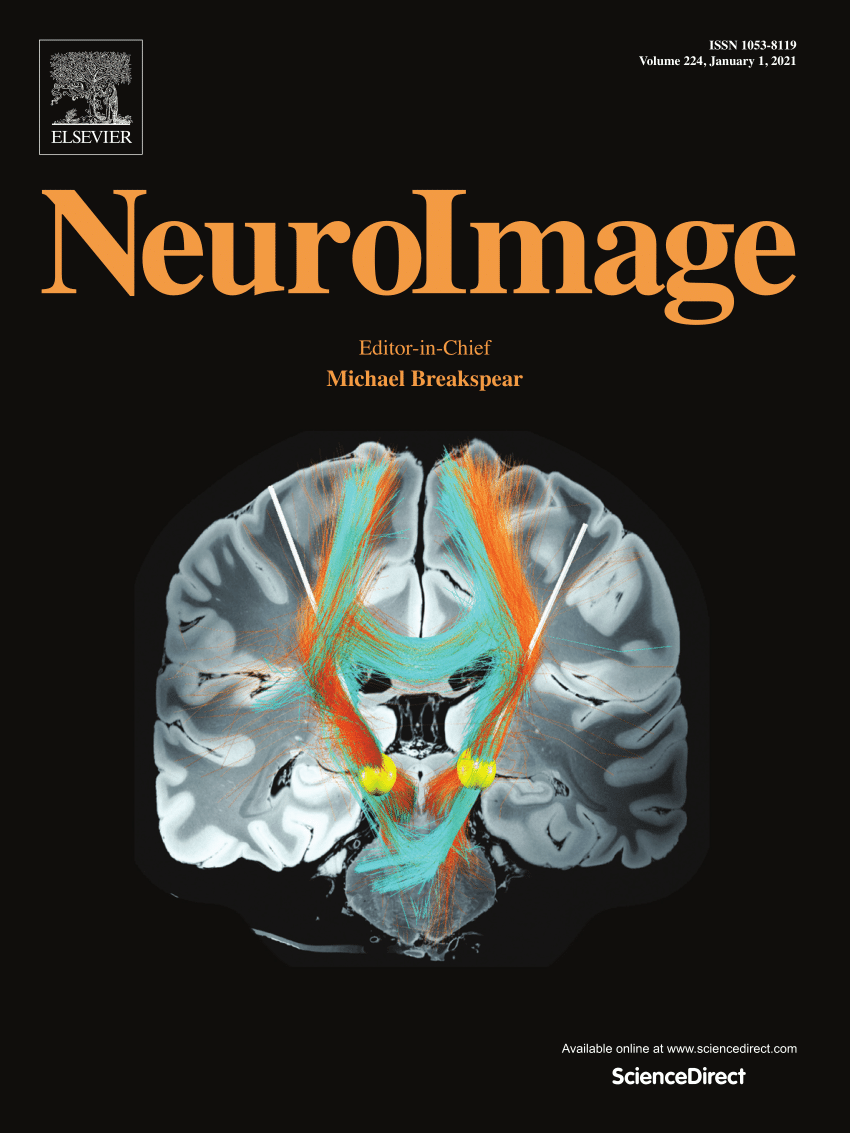Precision-dependent modulation of social attention
IF 4.7
2区 医学
Q1 NEUROIMAGING
引用次数: 0
Abstract
Social attention, guided by cues like gaze direction, is crucial for effective social interactions. However, how dynamic environmental context modulates this process remains unclear. Integrating a hierarchical Bayesian model with fMRI, this study investigated how individuals adjusted attention based on the predictions about cue validity (CV). Thirty-three participants performed a modified Posner location-cueing task with varying CV. Behaviorally, individuals’ allocation of social attention was finely tuned to the precision (inverse variance) of CV predictions, with the predictions updated by precision-weighted prediction errors (PEs) about the occurrence of target locations. Neuroimaging results revealed that the interaction between allocation of social attention and CV influenced activity in regions involved in spatial attention and/or social perception. Precision-weighted PEs about target locations specifically modulated activity in the temporoparietal junction (TPJ), superior temporal sulcus (STS), and primary visual cortex (V1), underscoring their roles in refining attentional predictions. Dynamic causal modeling (DCM) further demonstrated that enhanced absolute precision-weighted PEs about target locations strengthened the effective connectivity from V1 and STS to TPJ, emphasizing their roles in conveying residual error signals upwards to high-level critical attention areas. These findings emphasized the pivotal role of precision in attentional modulation, enhancing our understanding of context-dependent social attention.
社会注意的精确度依赖调节。
由凝视方向等线索引导的社会注意力对于有效的社会互动至关重要。然而,动态环境如何调节这一过程仍不清楚。本研究将层次贝叶斯模型与功能磁共振成像相结合,研究了个体如何根据线索效度(CV)的预测调整注意力。33名参与者在不同的CV条件下执行改进的Posner位置提示任务。在行为上,个体的社会注意力分配被精细地调整到CV预测的精度(反方差),预测通过关于目标位置发生的精度加权预测误差(PEs)更新。神经影像学结果显示,社会注意分配和CV之间的相互作用影响了空间注意和/或社会知觉相关区域的活动。目标位置的精确加权PEs特异性地调节了颞顶叶交界处(TPJ)、颞上沟(STS)和初级视觉皮层(V1)的活动,强调了它们在完善注意力预测中的作用。动态因果模型(DCM)进一步表明,增强的目标位置绝对精度加权PEs增强了V1和STS到TPJ的有效连通性,强调了它们向上传递残余误差信号到高级关键注意区域的作用。这些发现强调了精确度在注意调节中的关键作用,增强了我们对情境依赖性社会注意的理解。
本文章由计算机程序翻译,如有差异,请以英文原文为准。
求助全文
约1分钟内获得全文
求助全文
来源期刊

NeuroImage
医学-核医学
CiteScore
11.30
自引率
10.50%
发文量
809
审稿时长
63 days
期刊介绍:
NeuroImage, a Journal of Brain Function provides a vehicle for communicating important advances in acquiring, analyzing, and modelling neuroimaging data and in applying these techniques to the study of structure-function and brain-behavior relationships. Though the emphasis is on the macroscopic level of human brain organization, meso-and microscopic neuroimaging across all species will be considered if informative for understanding the aforementioned relationships.
 求助内容:
求助内容: 应助结果提醒方式:
应助结果提醒方式:


